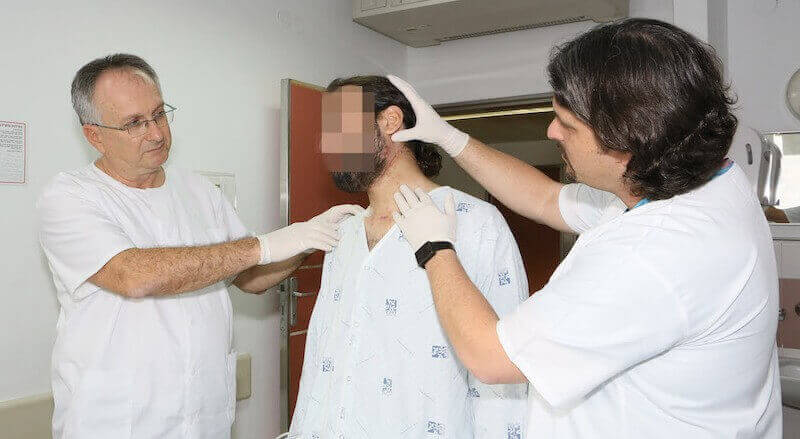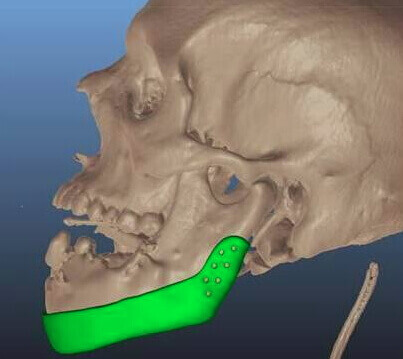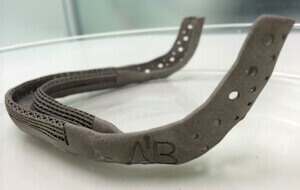The Syrian civil war that has been raging since 2011 has been one of the bloodiest conflicts this century has seen. Hundreds of thousands have been killed – many, if not most, of them civilians – after protests over government injustice escalated into armed aggression. Stories abound of the difficulties that plague the common man just trying to survive in a land fraught with danger. Unfortunately, it is this common man who is most often affected by the vicissitudes of war.
Case in point is Mohammed, a 23-year old farmer from Deraa who was struck by a projectile (thought to be from a Syrian jet) that shattered his lower jaw leaving him unconscious and struggling to survive. But the worst instances of human violence often inspire the greatest acts of human compassion.
In just such an act, Mohammed was taken to the Israeli-Syrian border along the Golan Heights and then – in a process that is still not completely clear – transported to Haifa’s Rambam Hospital for medical treatment.

Upon arrival, doctors were not sure if Mohammed would even last the night. If he did, his future would certainly be bleak – his lower jaw was a shattered mass of flesh and bone and he could neither eat nor drink. Fortunately, Dr. Yoav Leiser – one of Rambam’s maxillofacial surgeons – had just returned from a fellowship in Germany where he learned about putting emerging 3D printing technology to use in the medical field to produce improved Patient Specific Implants (PSIs).
Patient Specific Implants have typically been difficult to produce and fit because they consist of multiple pieces that need to be screwed together. Add to that difficulty the fact that the lower jaw is a very complex bone that differs in many ways from those in the legs and arms.
Capitalizing on what he learned in Germany, Dr. Leiser enlisted the help of the Israeli company AB Dental who 3D printed a titanium prosthetic on a Stratasys printer based off of CT scans of Mohammed’s skull. Unlike the traditional methods mentioned above that rely on small pieces linked together, 3D printing can produce a single part. And because it’s a single piece, the process of reconstruction becomes drastically less complicated.

Dr. Leiser and Professor Adi Rachmiel, director of Rambam’s Department of Oral and Maxillofacial Surgery, performed the delicate and complicated operation that gave Mohammed his jaw – and his life – back. They attached the titanium prosthetic – which looks very much like a jaw-shaped rail or cradle – to the remaining bones of Mohammed’s lower jaw (where it attaches to the skull). After that, the operation got considerably more complicated. Dr. Leiser explains: “The entry wound was very small but the exit was quite large and there was nothing left. Most of the bone was destroyed but we tried to save as much as possible.” Doctors used bone from Mohammed’s hip in conjunction with the existing fragments of jaw bone and reset it all within the titanium rail.

Over the healing period, and as new bone grows, it is hoped that the titanium prosthetic will become integrated into the structure of Mohammed’s jaw. Regardless of what the future holds and though the restoration isn’t complete yet (teeth need to be further repaired), Mohammed is now able to eat and drink on his own and has already been smuggled back into Syria to his family that must have considered him dead.
Before he was escorted to the Israeli-Syrian border, Mohammed made plans to return to Rambam Hospital to complete the last of the surgical procedures and undergo rehabilitation therapy.
Doctors are unsure exactly what will happen in the next six months but they are hopeful that this procedure will give Mohammed a new lease on life and act as a template from which other victims of major injury can be helped.
Though ancient grudges still linger between peoples of that region, Professor Adi Rachmiel puts words to what the vast majority of the world feels in some way: “Medicine is beyond politics.” For one victim after another, the Israelis are putting this idea into practice. Perhaps when this conflict has ended, the compassion shown to Syrian civilians like Mohammed will forge an improved relationship between countries that have typically been at odds. Time will tell.
License: The text of "Syrian Man Gets 3D Printed Jaw From Israeli Doctors" by All3DP is licensed under a Creative Commons Attribution 4.0 International License.